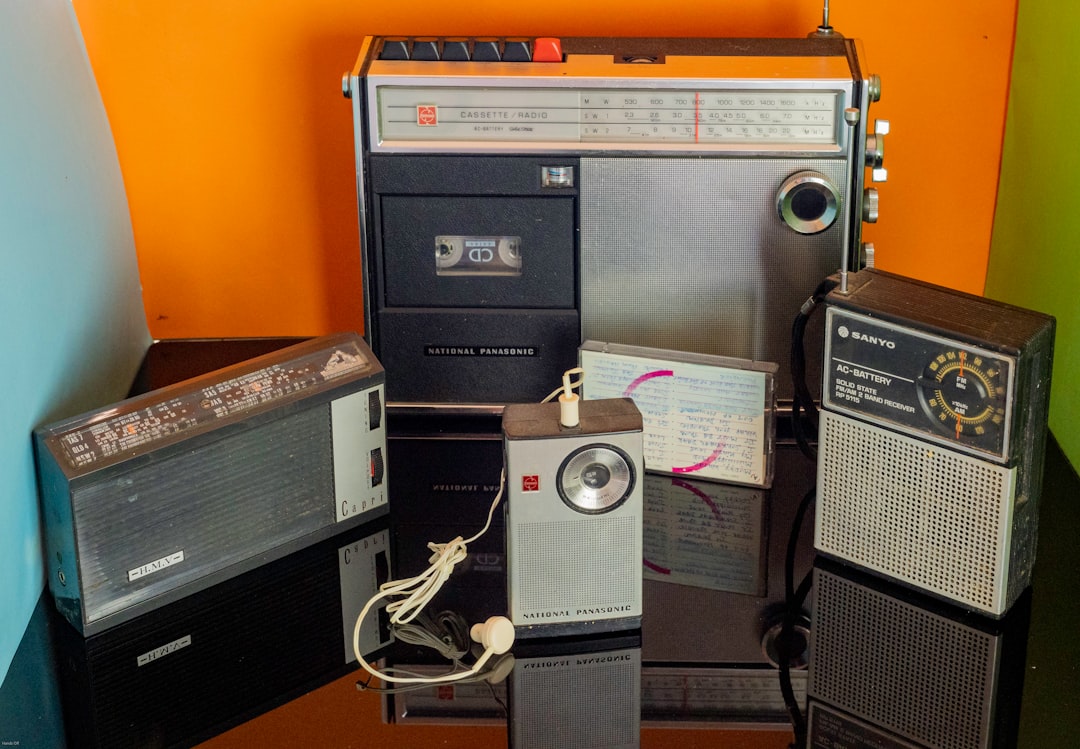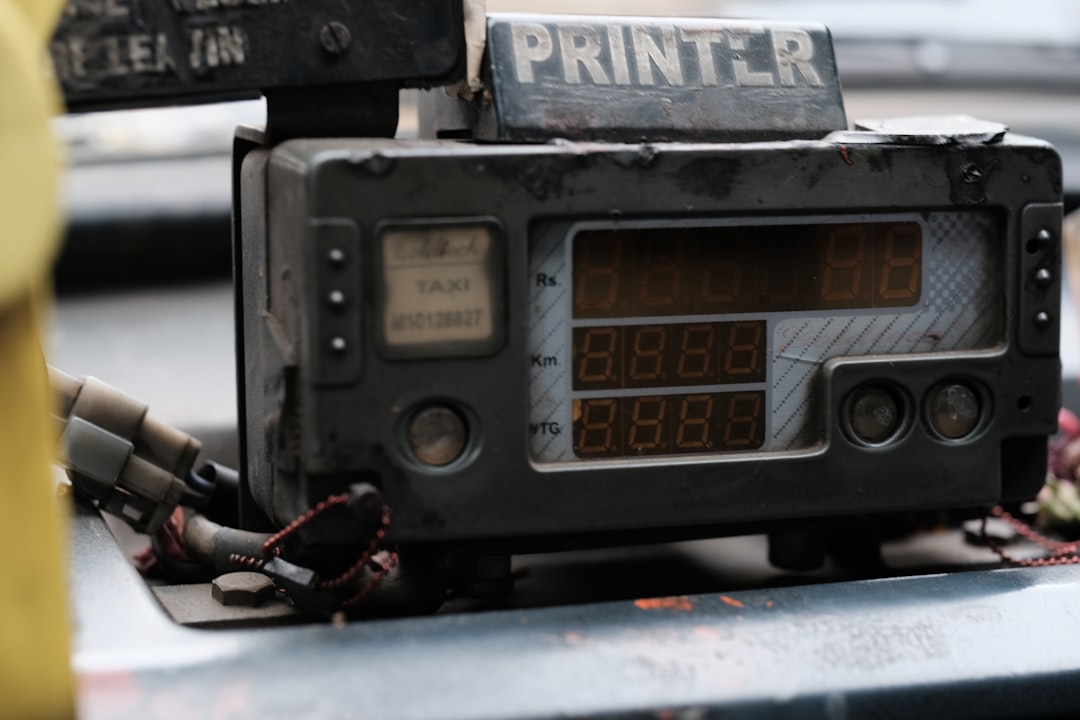

Engage prospects with a scan and streamline customer engagement with FREE QR code marketing tools by Sona – no strings attached!
Create a Free QR CodeFree consultation

No commitment

Engage prospects with a scan and streamline customer engagement with FREE QR code marketing tools by Sona – no strings attached!
Create a Free QR CodeFree consultation

No commitment
Tape recorder repair services are experiencing a resurgence as both vintage enthusiasts and professional audio technicians look to preserve and maintain legacy equipment. Many owners search for tape recorder repair guidance before choosing a shop. However, providers often struggle to track and engage with high-value prospects because many interested customers research online without initiating direct contact, which results in missed opportunities and uncertain demand signals. At the same time, consumer expectations have shifted as people now seek instant information, streamlined digital experiences, and immediate access to expert support, even for niche services like tape recorder restoration.
As tape recorder owners search for trusted repair professionals, challenges around cost transparency, authenticity, and availability often lead to uncertainty or hesitation. This is especially problematic when anonymous online visitors leave no trace, making it difficult for repair businesses to follow up or nurture potential customers who abandon inquiries before completing a form. Sona is an AI-powered marketing platform for identity resolution, data activation, and attribution. See Sona’s account identification to address this.
QR codes emerge as a vital bridge between the physical and digital worlds. They transform passive materials such as flyers, repair receipts, and shop signage into actionable entry points, allowing customers to access appointment booking, service histories, cost estimators, and post-repair testimonials right from their mobile device. By integrating QR technology, tape recorder repair services can enhance customer access and trust while gathering meaningful engagement data for smarter marketing decisions and improved revenue outcomes.

For many tape recorder repair shops, customer access is hindered by outdated processes, missed calls, lost email chains, and physical paperwork that slow down response times and contribute to lost high-intent leads. Prospects may visit your workshop, browse your window displays, or pick up a flyer without converting, especially if the next step requires extra effort. QR codes give you a direct path from curiosity to action. When every surface becomes a digital onramp, you reduce friction, increase responsiveness, and capture interest that would otherwise disappear.
Replacing analog touchpoints with QR codes does not require a full technology overhaul. Start with common customer interactions like requesting a quote, checking repair status, or learning about calibration and refurbishment services. Then connect each interaction to a clearly labeled QR code that routes the user to a mobile-first experience. With Sona QR, you can generate codes in minutes, track scans by source and device, and iterate quickly as you learn what placements and messages work best.
This seamless integration not only replaces outdated workflows but ensures you no longer miss out on high-value opportunities from prospects who once slipped through the cracks. Over time, you will build a database of intent signals that improves forecasting, increases conversion rates, and elevates the customer experience end to end. See Sona’s guide to intent data for deeper strategy.

Tape recorder repair businesses frequently rely on physical points of customer interaction such as shop front displays, branded flyers at audio expos, or printed invoices, yet struggle with visibility into who engages and what converts most effectively. Without a digital bridge, many prospective leads go unidentified and unpursued, and there is little data to justify outreach spend. A thoughtfully deployed QR strategy transforms these static materials into measurable, interactive touchpoints.
The need for speed and simplicity is real in this niche. People are often evaluating repairs for cherished equipment, and they want quick clarity on turnaround, pricing, and expertise. QR codes deliver instant answers without forcing an app download or manual search. With dynamic QR codes, you can update links to reflect parts availability or seasonal promotions without reprinting collateral. And with trackable analytics, you can finally quantify which prints, placements, and offers drive actual appointments and revenue.
Embedding a QR code on a service invoice that leads to a feedback form enables direct collection of customer reviews and referrals. Combining these with booking links and maintenance resources increases retention, creates social proof, and builds a continuous loop of measurable engagement.

Choosing the right QR format is essential for guiding tape recorder owners to the next best action. In repair environments, the most effective formats streamline contact, simplify intake, and boost post-service engagement. Select formats based on the moment of interaction and the outcome you want to drive.
Repair professionals often benefit from a mix of persistent static codes for evergreen resources and dynamic codes for campaigns, promotions, and evolving workflows. With Sona QR, you can generate and manage multiple formats in one place, then route scans to landing pages, forms, or chat experiences with precise tracking.
Platforms built for repair professionals centralize code generation and deployment, closing gaps where otherwise valuable leads might be lost. Explore Sona QR’s use case library. The right mix of formats helps you move customers from curiosity to action with minimal friction.

The challenge in tape recorder repair services is to identify and activate the physical touchpoints where prospects and clients engage, but where intent is often lost due to invisible or disjointed handoffs. Mapping your customer journey across the workshop, events, and print channels reveals dozens of moments where a scan could turn interest into action.
Start by prioritizing areas with high foot traffic, frequent questions, or repeated status checks. Then choose calls to action that answer the most common hesitations: pricing transparency, turnaround times, shipping workflow, parts availability, and expertise. The result is a shop that feels effortless to engage with, even for first-time visitors.
These high-impact placements ensure no moment of genuine customer intent goes unrecorded or unaddressed. Over time, you will see patterns in scan behavior that guide smarter staffing, inventory planning, and marketing investment.

Persistent friction in the post-service phase from lost receipts to forgotten appointment times or uncollected reviews can dull satisfaction and erode loyalty. QR-driven workflows address these pain points with practical solutions that fit the way enthusiasts and working professionals engage. The most effective use cases share three traits: clear calls to action, mobile-first experiences, and measurable outcomes.
Consider deploying the following use cases first. They map tightly to common customer interactions and deliver immediate value to both your clients and your operations team.
When launched together, these use cases create a smooth, end-to-end journey: discovery to booking, status visibility to completion, and finally feedback that powers continuous improvement. Each scan becomes a signal you can measure and use to refine your service delivery.
A frequent challenge in this niche is the inability to connect offline engagement to digital follow-up, especially when many prospects research silently. Treat each QR scan as a soft conversion that reveals intent. By using unique codes across placements and stages, you can segment audiences and deliver precise, timely outreach that respects context.
Segmentation can be as simple or sophisticated as your tools allow. Start by assigning codes to key milestones like inquiry, booking, in-repair status checks, and completion. Then enrich with attributes like location, event, device, and time of day. With Sona QR, these signals can sync to your CRM or ad platforms for immediate action.
By capturing and acting on these micro-interactions, shops reduce lost opportunities and systematically feed more qualified leads into their pipeline. The result is targeted, respectful nurturing that feels helpful to customers and efficient to your team.
A key frustration for many repair providers is the disconnect between offline promotions and online outcomes. Flyers, trade shows, and in-store events generate activity that is hard to quantify. QR codes become the connective tissue in your marketing mix, linking every campaign to a measurable action while capturing first-party data. See Sona QR’s guide to QR codes in marketing.
Think of QR codes as the universal call to action for your physical and media channels. Every brochure, bag, banner, and bench tag can route to a tailored destination with a clear benefit for the scanner. With Sona QR, you can manage all codes centrally, compare performance across channels, and feed scan data into your CRM and analytics stack.
Unified management lets you observe which channels deliver the most valuable journeys from first scan to paid repair. Attribution becomes credible, and your mix evolves based on evidence rather than assumptions.
Start with a specific friction point you want to solve. High-impact options include instant booking, pre-diagnostic intake, repair status checks, and post-repair reviews. Align each use case with a business outcome like faster quotes, fewer status calls, or more testimonials.
Choose static QR codes for evergreen resources that rarely change, like your service menu or maintenance library. Use dynamic QR codes for campaigns, events, and destinations you may want to update without reprinting. Use a reliable QR code generator to support both.
Give your codes visual hierarchy and clarity. Add a descriptive headline and a benefit-driven call to action, such as “Scan for instant quote” or “Scan to check repair status.” Incorporate brand colors while preserving high contrast for scannability.
Roll out your codes where they will create the most measurable lift. Prioritize the counter, window signage, repair tags, shipping boxes, and event displays. Make sure staff understand each code’s purpose so they can invite customers to scan.
Use analytics to assess scan volume, conversion rate from scan to action, and time-to-booking. Monitor where drop-offs occur, and experiment with CTAs, landing page content, and code size or placement to improve results.
One major pain point in tape recorder repair marketing is the inability to connect specific touchpoints like event scans or flyer responses to actual revenue. When campaigns operate in isolation, it is hard to prove ROI or optimize spend for high-value acquisitions. A purpose-built analytics layer turns QR activity into a full-funnel performance signal.
With the right tools, you can capture the who, when, and where of each scan, then link that engagement to bookings, invoices, and referrals. This gives repair providers visibility from first interest to closed work orders. It also enables proactive outreach when signals indicate an upgrade opportunity, a stalled inquiry, or a churn risk.
Unified dashboards bring the full customer journey into view, from offline scanning to payment. That clarity turns QR-equipped materials into measurable growth levers instead of guesswork-driven expenses.
Earning consistent results requires a blend of thoughtful design, smart placement, and disciplined measurement. The following best practices help repair shops maximize scan rates and ROI while building a durable system for repeatable growth.
Focus first on clarity and value. People scan when they know what they will get and why it matters. Pair each code with a benefit statement, make the next step effortless, and follow every scan with a helpful experience that reinforces trust.
Innovative deployments can further increase engagement. Try a QR-enabled loyalty punch card for repeat maintenance clients, or a calibration sticker with a QR that opens a six-month checkup booking page. These small touches create ongoing touchpoints and encourage repeat business with minimal overhead.
QR codes have evolved into more than just a novel engagement tool for tape recorder repair services; they are essential enablers of customer access, data-driven optimization, and seamless multi-channel journeys. When you turn every physical surface into a digital entry point, you make it effortless for prospects and customers to take the next step. You also generate a stream of signals that guide resource planning, marketing investment, and service improvements.
Here is what a strong QR program delivers for repair providers:
By weaving QR codes into every phase of your operation, you align expert craftsmanship with a modern service delivery model. Sona QR gives you everything you need to capture demand at the source, iterate on what works, and prove impact from scan to revenue. Starting is simple: start creating QR codes for free, place them at high-intent touchpoints, and watch how even small changes compound into meaningful growth for your tape recorder repair business.
QR codes have revolutionized tape recorder repair services by turning traditional customer interactions into seamless, trackable experiences. From simplifying access to repair manuals and instructional videos to streamlining service requests and follow-ups, QR codes enable repair shops to acquire new customers, enhance service satisfaction, and boost operational efficiency. Imagine your clients instantly accessing tailored troubleshooting guides or booking repairs with a simple scan—making every interaction faster and more engaging.
With Sona QR, you can create dynamic, trackable QR codes that update instantly without the need to reprint labels or materials. This means you can continuously optimize your repair service campaigns, monitor customer engagement in real time, and directly link scans to increased bookings and revenue. No more guesswork—just measurable results and improved customer loyalty.
Start for free with Sona QR today and transform each scan into a powerful tool for growth and customer connection in your tape recorder repair business.
Reliable tape recorder repair services can be found by searching online for trusted professionals who specialize in vintage equipment restoration and maintenance.
Costs vary depending on the service but using QR codes at repair shops can provide instant quotes and cost estimators to give customers quick pricing information.
Signs that your tape recorder needs professional repair include issues like belt degradation, head wear, transport alignment problems, or failure to function properly.
Common signs include unusual noises, playback issues, tape transport problems, or failure to record or play sound correctly.
Repairing preserves cherished vintage equipment, maintains audio quality, and can be more cost-effective and environmentally friendly than replacement.
QR codes simplify customer access to instant quotes, booking, repair status updates, and post-repair care, while providing measurable engagement data for repair shops.
Useful QR codes include web links for booking and status, vCards for contact sharing, SMS or email pre-fills for quick inquiries, feedback forms, and dynamic codes for promotions.
Shops can place QR codes on flyers, repair tags, receipts, and signage to provide instant quotes, status updates, maintenance guides, and collect customer feedback.
They should choose use cases aligned with business goals, select appropriate static or dynamic codes, design clear calls to action, place codes strategically, and track performance.
They can track scan times, locations, and devices to measure engagement, attribute bookings and revenue, optimize marketing efforts, and improve customer follow-up.
Use Sona QR's trackable codes to improve customer acquisition and engagement today.
Create Your FREE Trackable QR Code in SecondsJoin results-focused teams combining Sona Platform automation with advanced Google Ads strategies to scale lead generation

Connect your existing CRM

Free Account Enrichment

No setup fees
No commitment required

Free consultation

Get a custom Google Ads roadmap for your business






Launch campaigns that generate qualified leads in 30 days or less.
